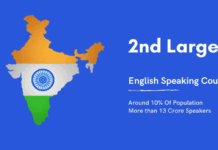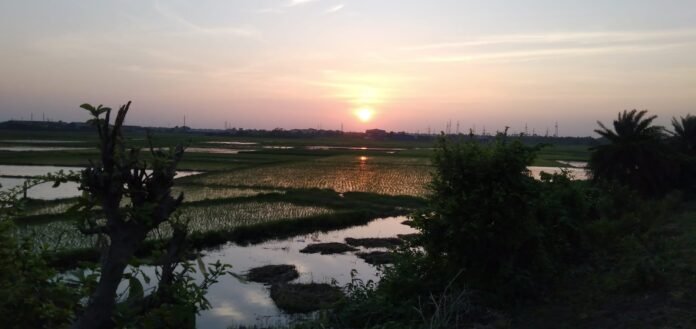DVC Khal is hardly 10 kilometers from my home, Chandannagar.
DVC
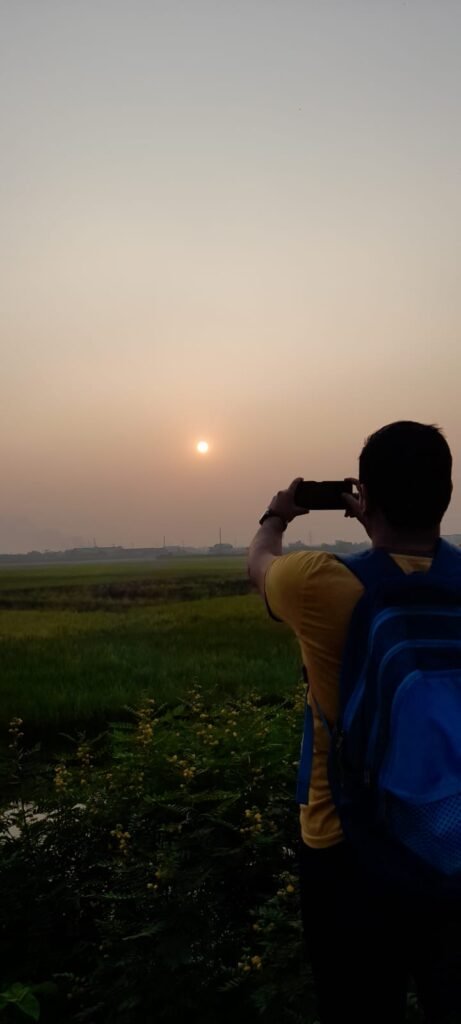
‘DVC Khal’ could be a relatively virgin spot for nature lovers. The curve-shaped ‘khal’ is a cut out of a dead river called katkunti.

Readers may note ‘Khal’ is a Bengali word that means canal (Nahar in Hindi).
The water from the DVC barrage, Durgapur, flows to ‘DVC Khal.’ It passes through Bhadreswar and Baidyabati before merging into’ Ganga’ river at Baidyabati.
I often enjoy riding my bike with my son Saikat along National Highway No. 6 (Delhi Road) to reach here for an evening stroll.
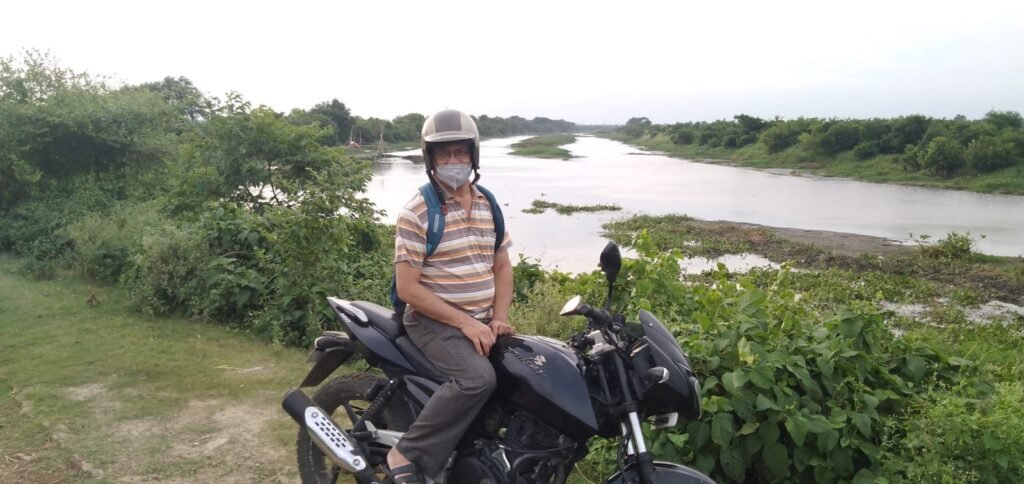
How to reach DVC Khal
By Road: You have to drive along with the national highway No. 6 until the Bighati crossroad and take the first lane adjoining the highway. Go almost straight after that for half a kilometer, take a right turn near a bridge, get past the residential area of village Gaurangopur and get to the first bridge of the ‘DVC khal’s. ‘Bhadreswar end.
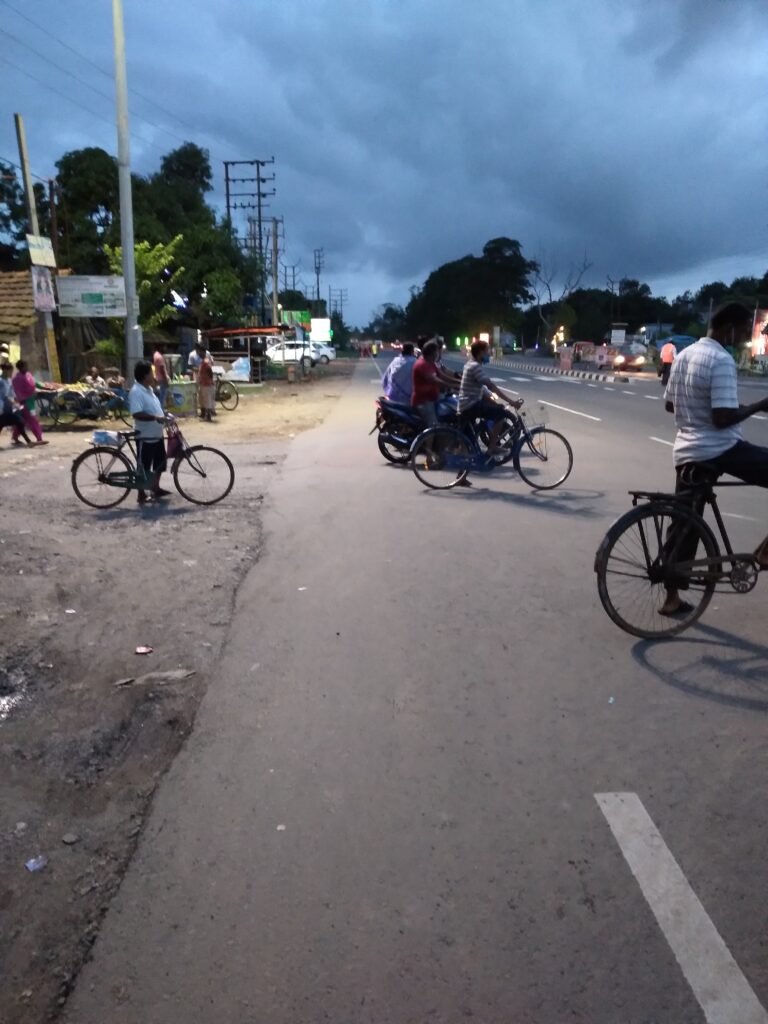

By Train: If you want to come by train, then take any local Bandel or Burdwan bound train from Howrah station, get down at Baidyabati, go-to platform number 3, and from there, it is hardly a two to three-minute walk before you touch the 3rd bridge of the ‘DVC khal’ (i.e., the ‘Baidyabati end’ of the ‘DVC khal’)
Description Of DVC Khal
At first sight, I am sure the nature lover gets mesmerized by the water flowing in the ‘DVC khal’ in its rhyme in harmony with nature.
Alongside the ‘DVC Khal’ are innumerable green leafy trees and flowers, besides paddy and jute fields. This is the season of paddy and jute. Green vegetables like cabbage, cauliflower, tomatoes, onion, lady’s finger, mustered, etc., will be grown from November.
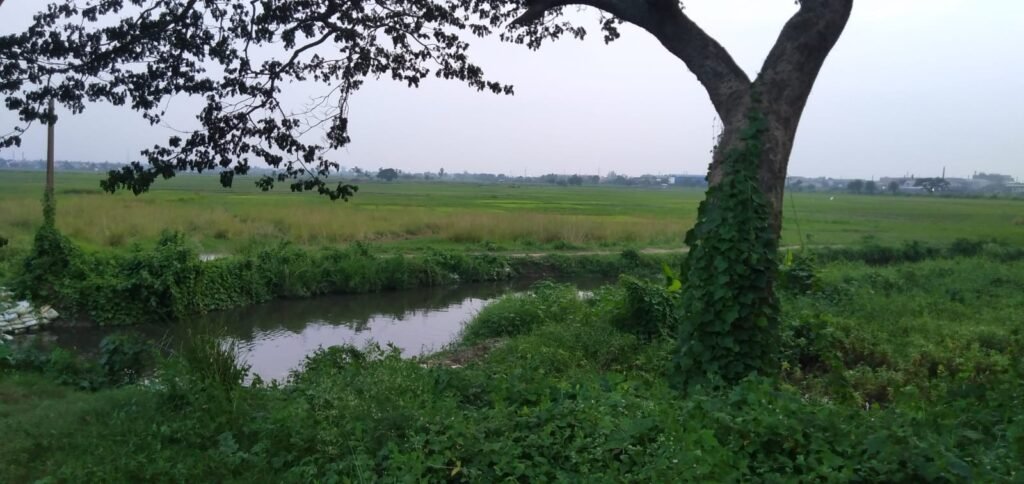
The cool breeze stirred the leaves of the trees and brought a sigh of relief from the heat and humidity. The scenic beauty cleanses your soul from the dust of toil.
The jungle thickens as you move ahead. Occasionally, you may see colorful butterflies and birds of migratory nature.
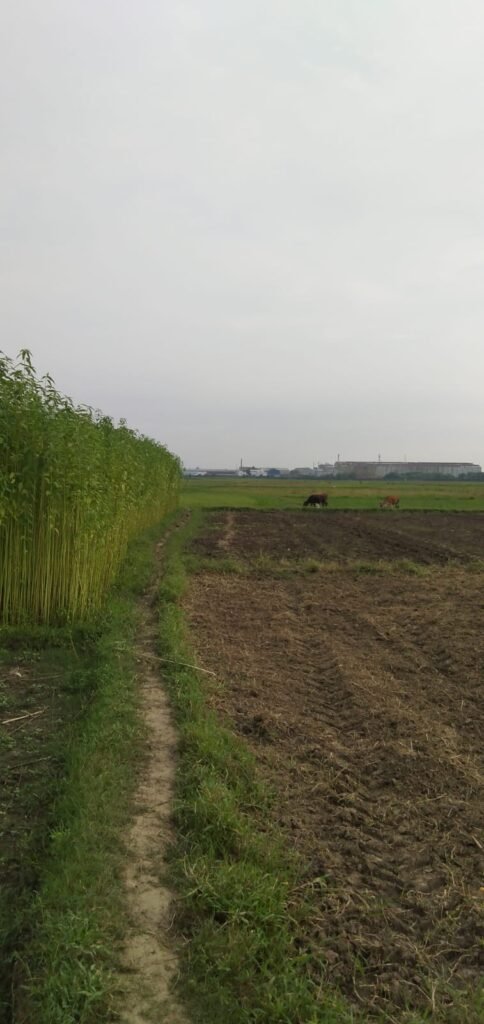
This place is very suitable for bird watching. Many bird lovers who have come to know about ‘DVC Khal’ come here to have glimpses of different birds and take their pictures.
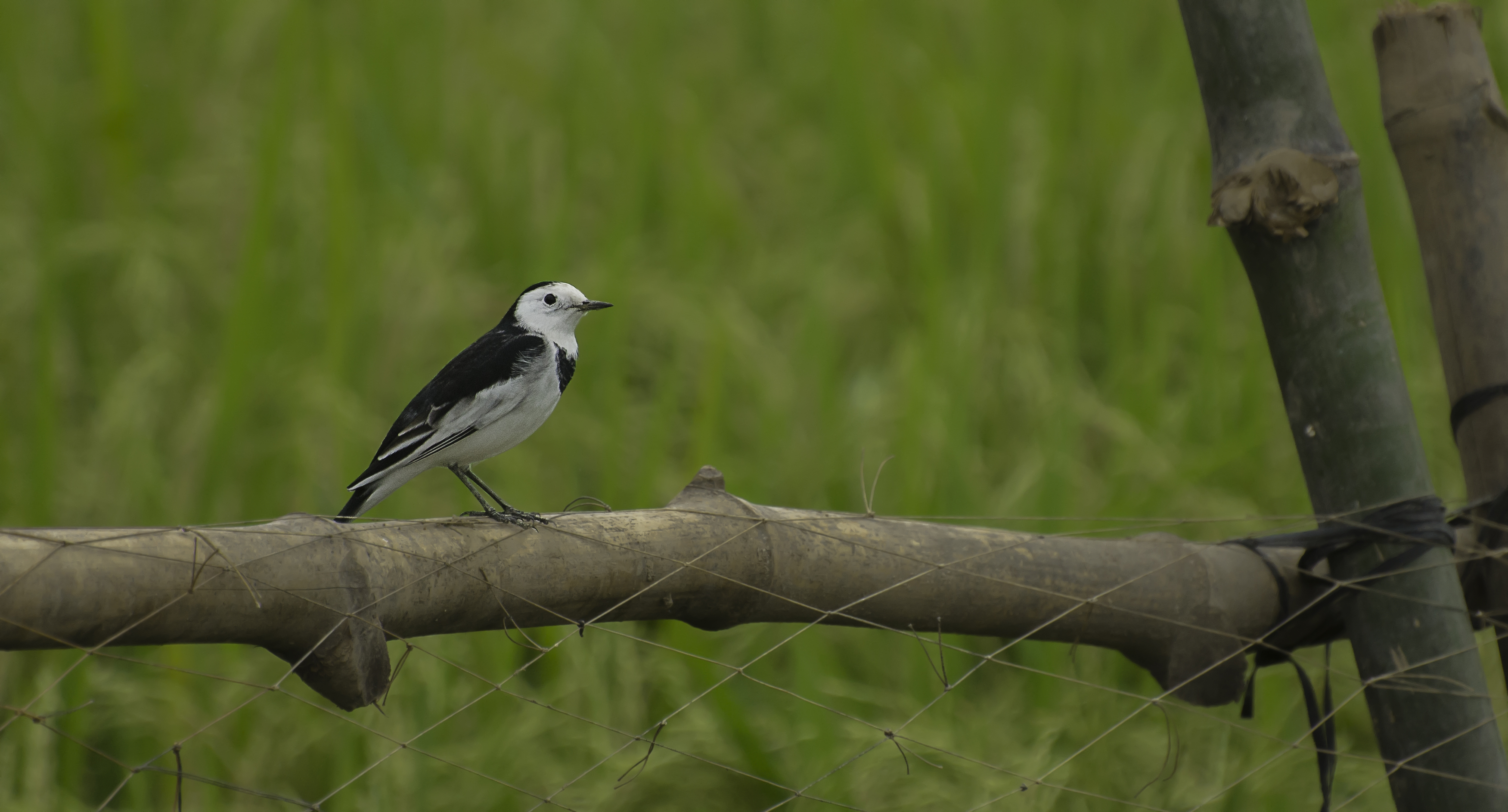
But if you are a bird watcher and have a knack for bird photography, come here in the morning hours when birds of the same nature flock together. If luck smiles on you, you may find a colorful bird sitting close to you. So be alert with the camera to grab the rare opportunity of this kind. Unfortunately, I am neither a good bird watcher nor a good photographer. So maybe I cannot give you more input beyond this. But for birds lovers, the more they visit here, the better they learn about birds.
I observed several bucks flying over the ‘DVC Khal.’
In my past couple of days’ visit, when the sun was getting down, I heard the call of some crickets and saw the villagers returning home carrying loads of grass after a day-long hard toiling in the field. Maybe the grass was for feeding the cattle.
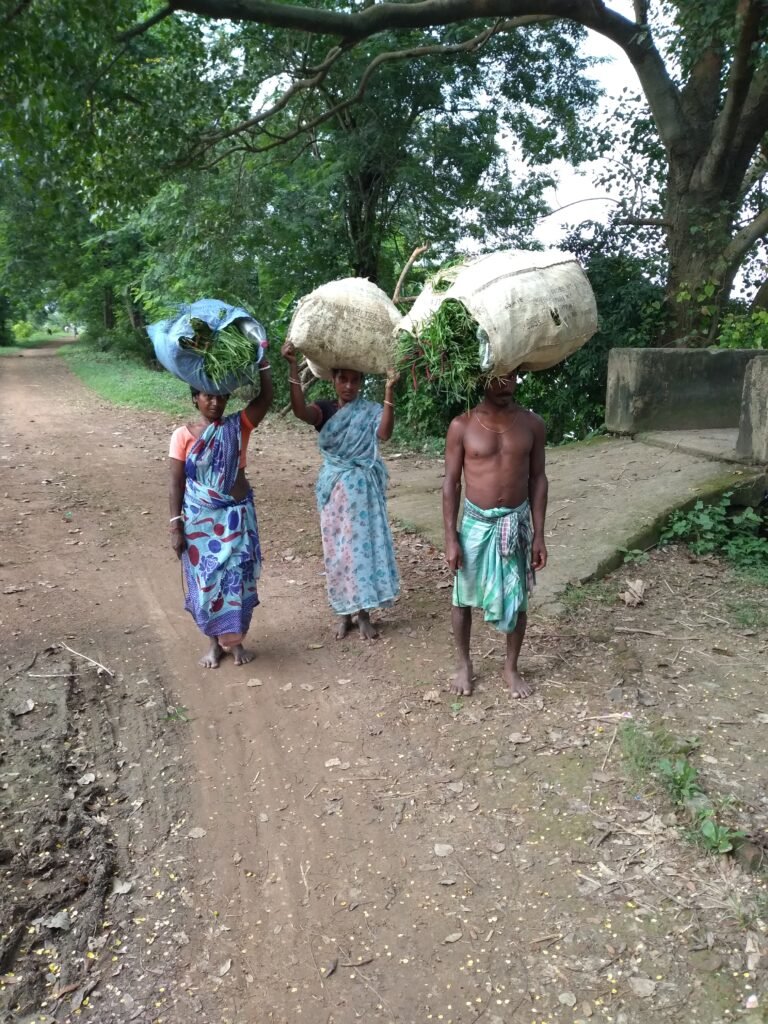
The greeneries, the red muddy road, the moving bullock cart, the jingling of cowbell, the face of rustic villagers- all in all, it evoked a beautiful feeling of the village environment.
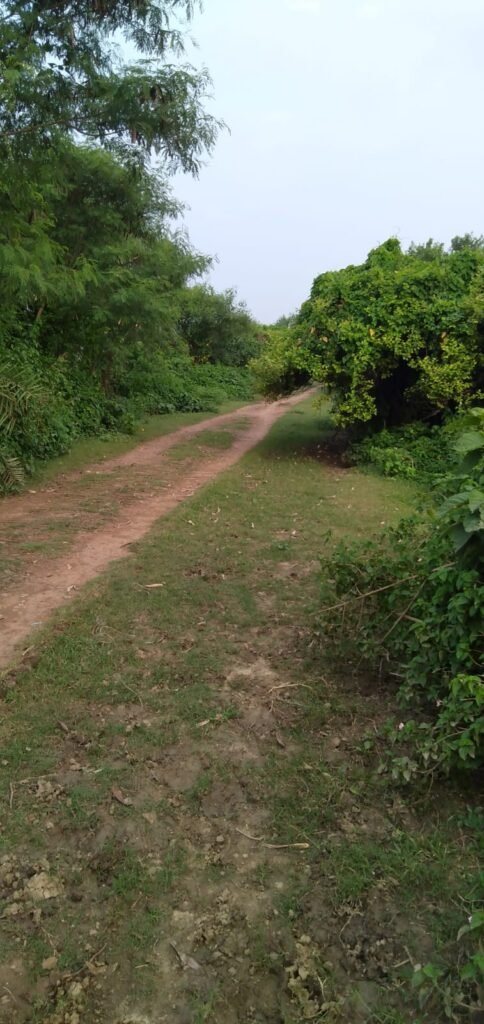
There are three bridges between the 3 KM stretch of the red muddy road. You may enjoy the serene view of nature at its best if you sit on the culvert of the second bridge for some time.
I was lucky to see a rare species, ‘Iguana’, in the ‘DVC Khal’ while relaxing on the second bridge. My son Saikat lost no opportunity to capture it on his mobile camera. The Iguana is a kind of ‘Goesaap’ in Bengali.
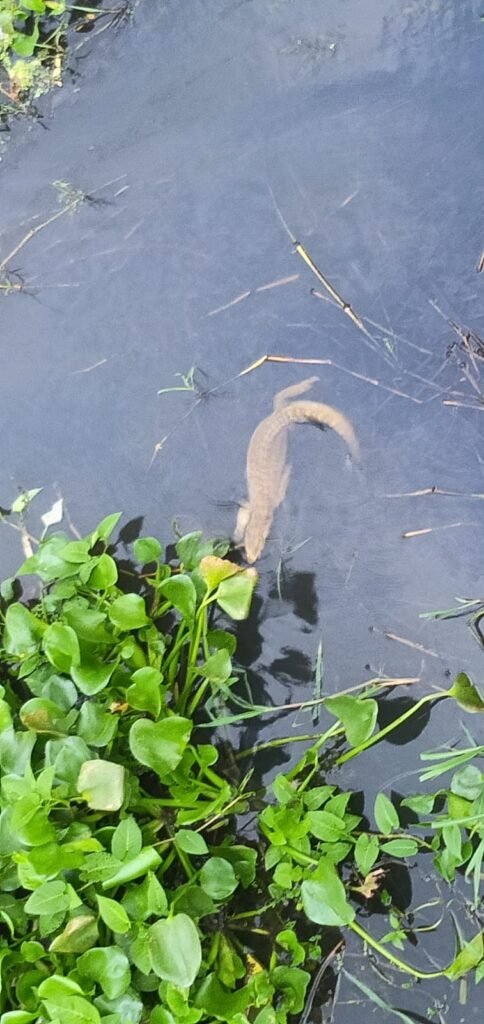
Interaction with the people in the DVC Khal
Govindan: Millworker
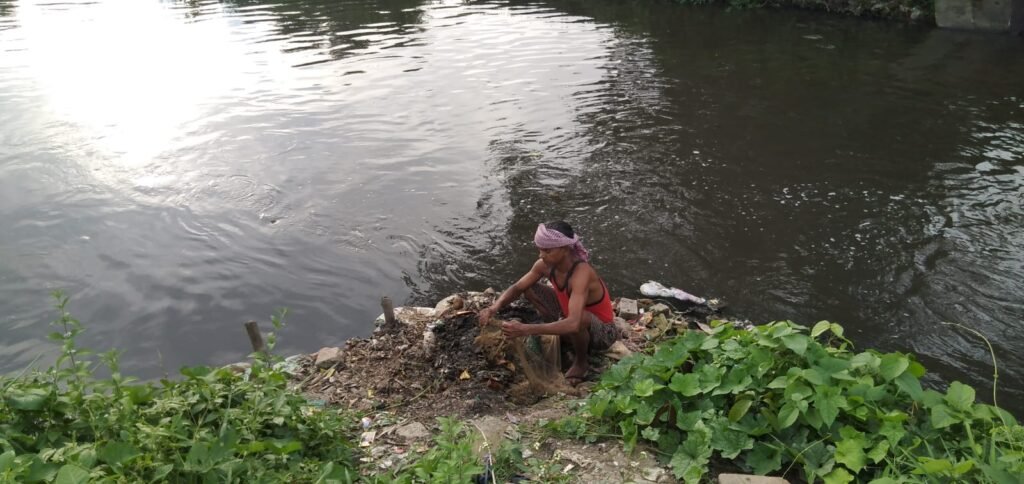
Govindan, a worker from ‘Champdani mill,’ was fishing in a small water channel. “There are now not many here,” his voice boomed out to ensure I could hear him. I was standing a little distance away from him.
“In the monsoon, we use a net to catch fish. I work in a Jute Mill. My duty time is over now. Fishing helps me to supplement my income. Otherwise, it would be difficult to run a family with a meager wage I get from the mill”, said ‘Govindan’ smilingly.
Govindan belongs to Bihar, but he has settled down at nearby ‘Champdani’ village.
Jute (In Bengali Putt): Steps of Processing
a) Full-grown Jute plant’s stem immersed in water for a week to let the branch decompose.
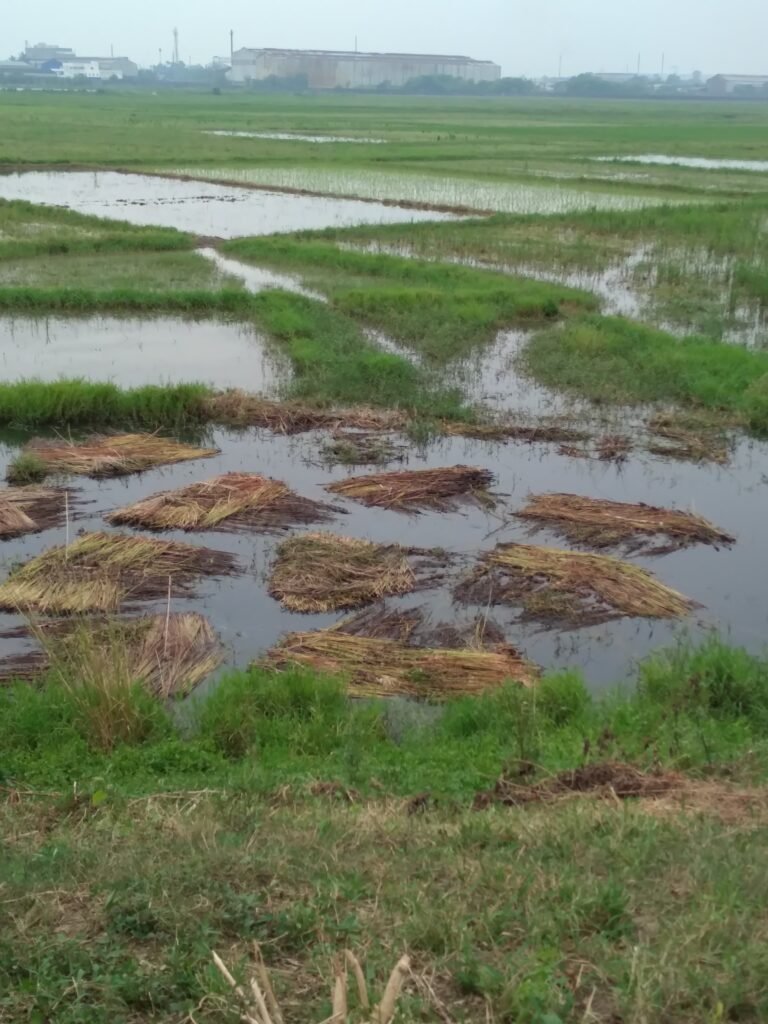
b) Fibre meant to process jute removed from decomposed stem
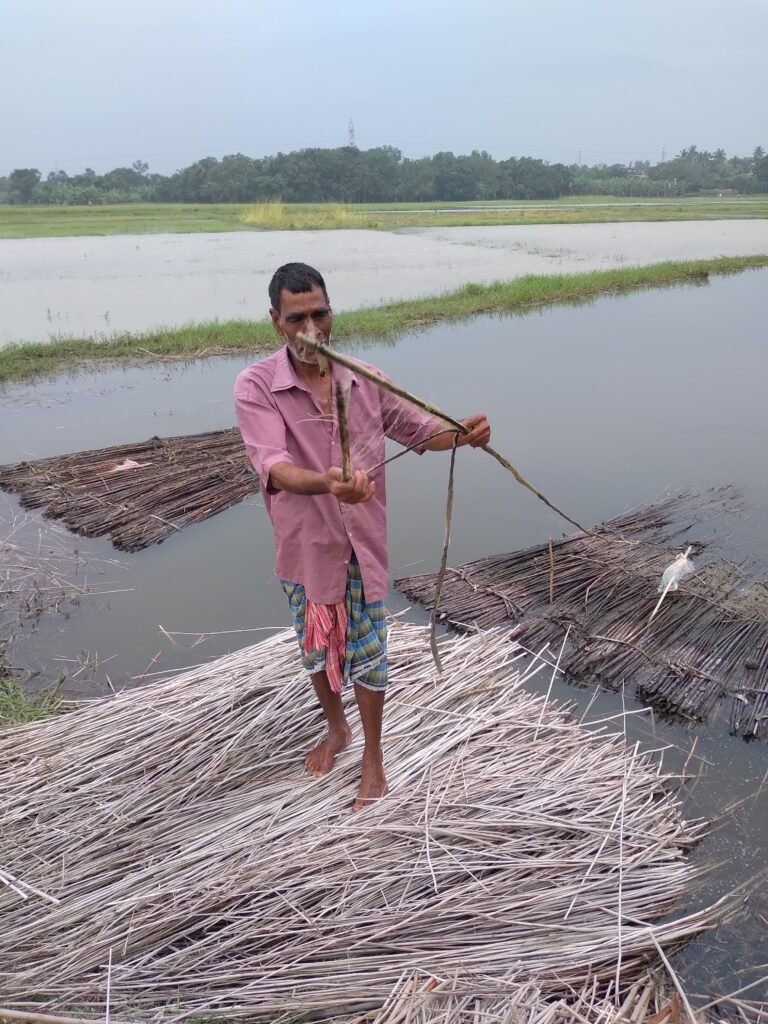
c) Jute fiber being dried for 48 hours before being dispatched to Jute Mills for production of Jute items like bag, gunny bag, rope, twine, etc
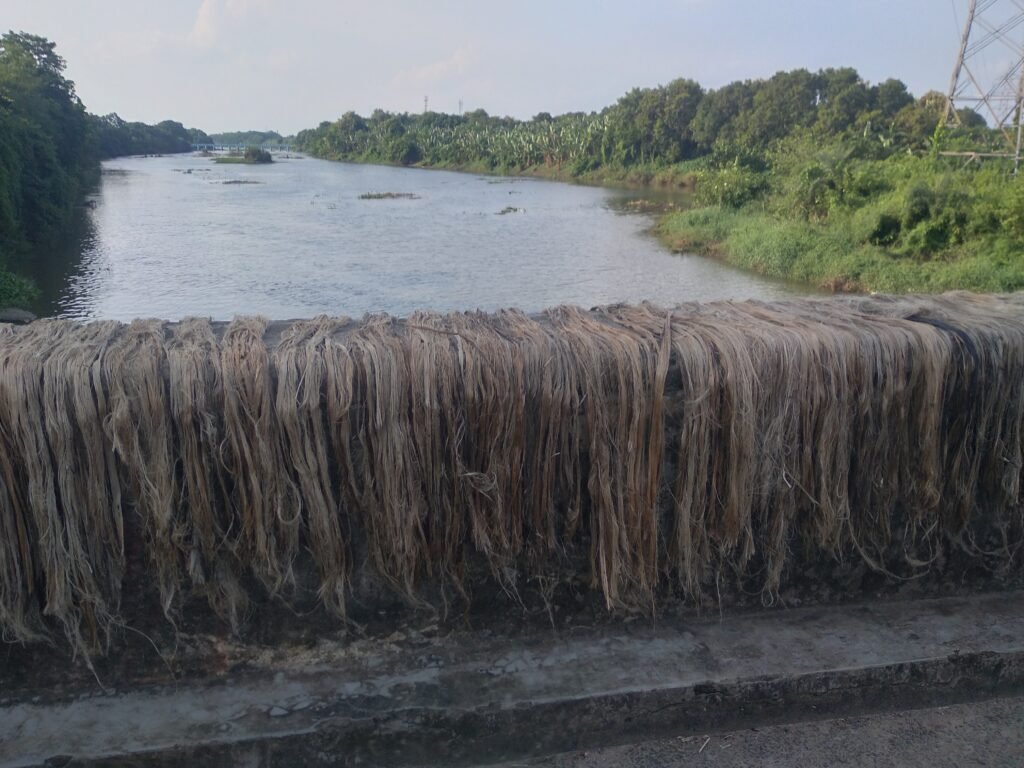
d) The leftover straw/wood called pakati in Bengali are collectively stacked, being used as fuel and funeral pyre.
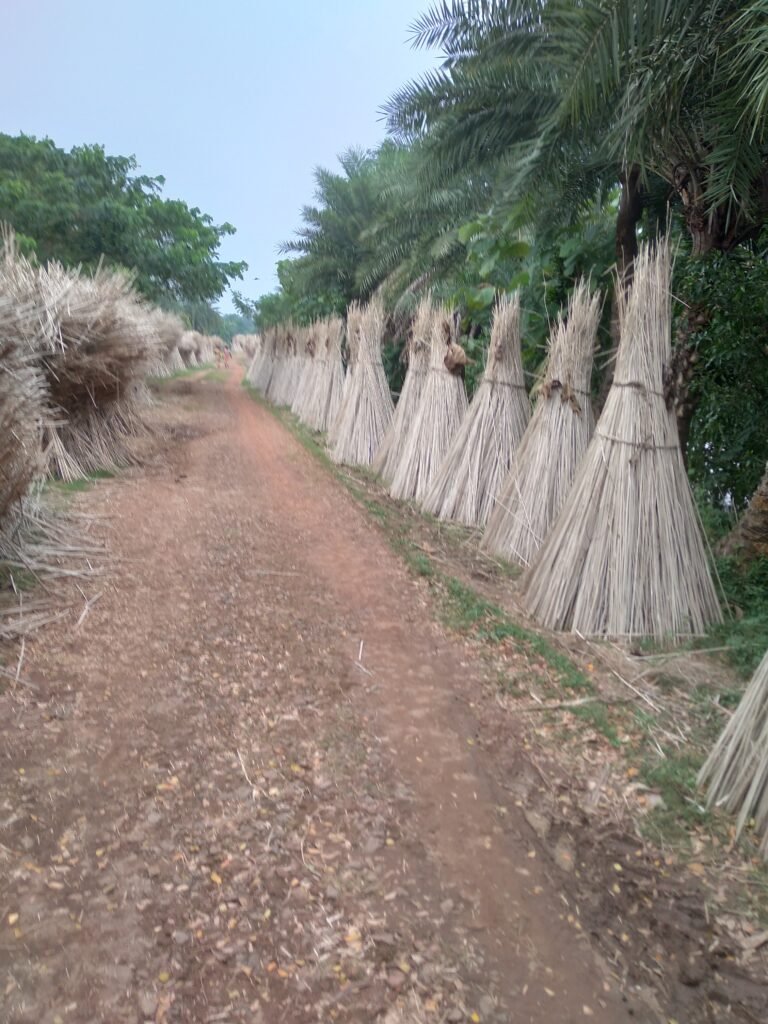
Interaction with a family of Jute growers
There are great jute mills near ‘DVC Khal’ like at Bhadreshwar, Baidyabati Telanipara, Champdani, Rishra, Sreerampur, Gondalpara, Chutipur, etc. But some of them are facing closure.
In Bengali, Jute is called Putt.
“After growth of the Putt, the plant’s stem is immersed underwater for several hours, and then fiber is removed from the stem, cleaned, and dried before sending it to the nearby mills for processing the jute. After removing the fiber, the leftover wood/straw, called pakati in local parlance, are also bundled and used as fuel for cooking purposes”, said a farmer laboring in a jute field. Generally, white jute is grown here.
Standing by her husband’s side, his wife says, “nowadays, the cooking gas price has gone up. We are always poor and cannot always afford cooking gas. So most of the villagers here use ‘pakati’ for cooking. Rice cooked using ‘pakati’ is always tastier than ‘gas cooked”.
Interaction with Paddy Field Workers: Chittaranjan Ghosh & Sunil Ghosh
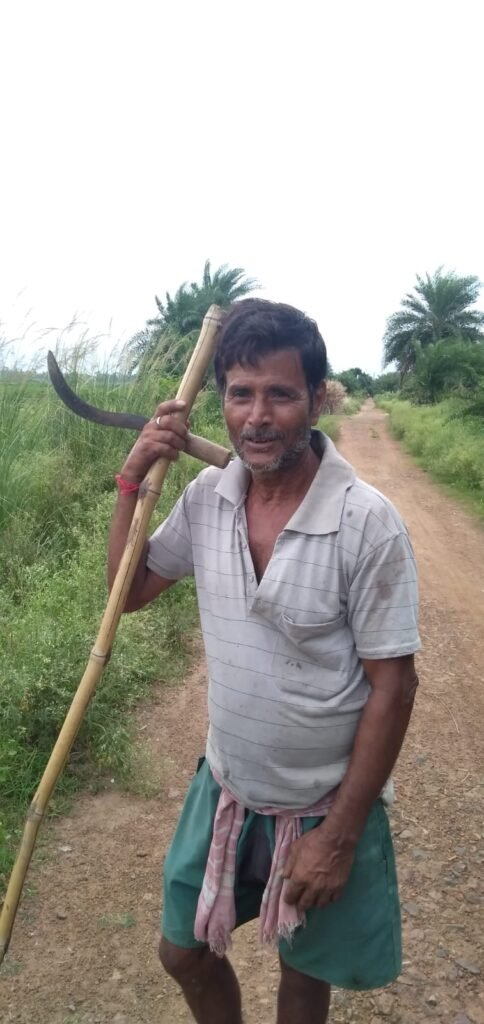
Paddy here is grown by the transplantation method, said Sunil Ghosh and Chittaranjan Ghosh, farmers working in the Paddy field beside the DVC Khal.
The duo said that the transplantation method gives better yield and quality.
In an end-to-end explanation about rice production, Sunil and Chittaranjan told me that at first, with the onset of pre-monsoon shower, the land is cultivated with the tractor. Then, rice seeds are spread out in the field (Dhan Beej bowa in Bengali). The soil must be wet. Manure is also added to the ground when the plant has just started growing from seed.“If the rain is normal, then it’s okay. Otherwise, water has to be drawn from ‘DVC khal’ to keep the land wet”, said Sunil.
When the plant grows around three inches from the seed, we pull it out by its root. It is then cleaned. Soil that sticks to it is removed by washing with water. The plant at this stage is called ‘bija‘ in local parlance. Next, the ‘bija’ is sowed in the adjacent field. This method is called transplantation. Finally, the paddy germinates into sheaf (‘Dhaner shish’ in Bengali). The sheaf is allowed to mature before harvesting. The harvesting will be over by November,” informed the duo.
The sheaf is processed in the machine to separate the husk from the finished product rice.
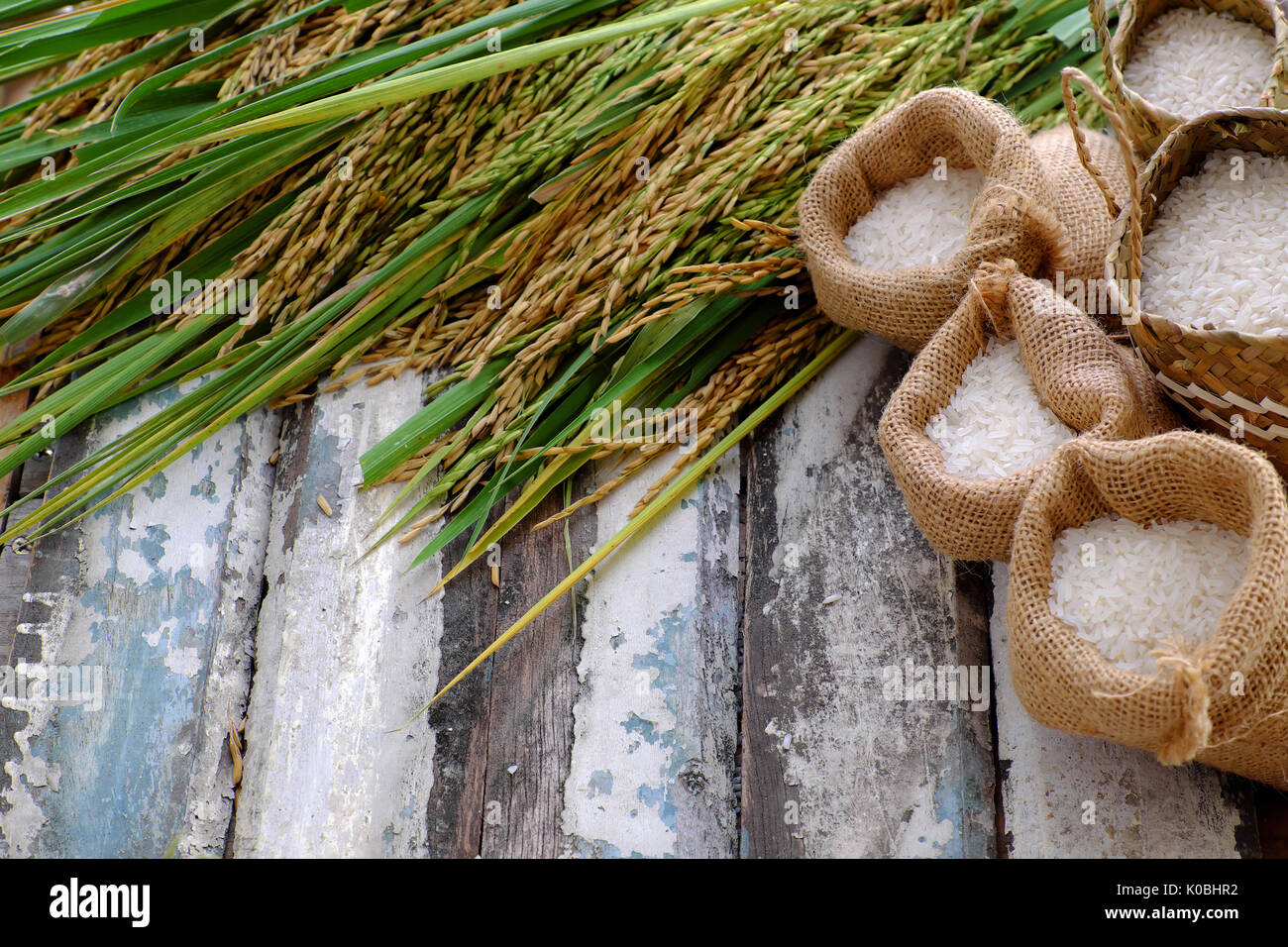
The DVC Khal is reasonably shallow. But when water from the Durgapur barrage is released or there is a tidal flow of water from Ganga, the level increases.
Sunil and Chittaranjan said there is no submerging pump to draw water from ‘DVC Khal.’ “We have to depend on the Block Development Officer, Gram Panchyat, and Gateman of DVC Khal to provide water,” said both farmers.
When I talked to Chittaranjan Ghosh, a herd of goats was grazing. Said Chittaranjan. “Yes, I bought these goats to assist with my crisis when I had no work or suffered a huge loss in crop production. I sold the goats to earn a living.”
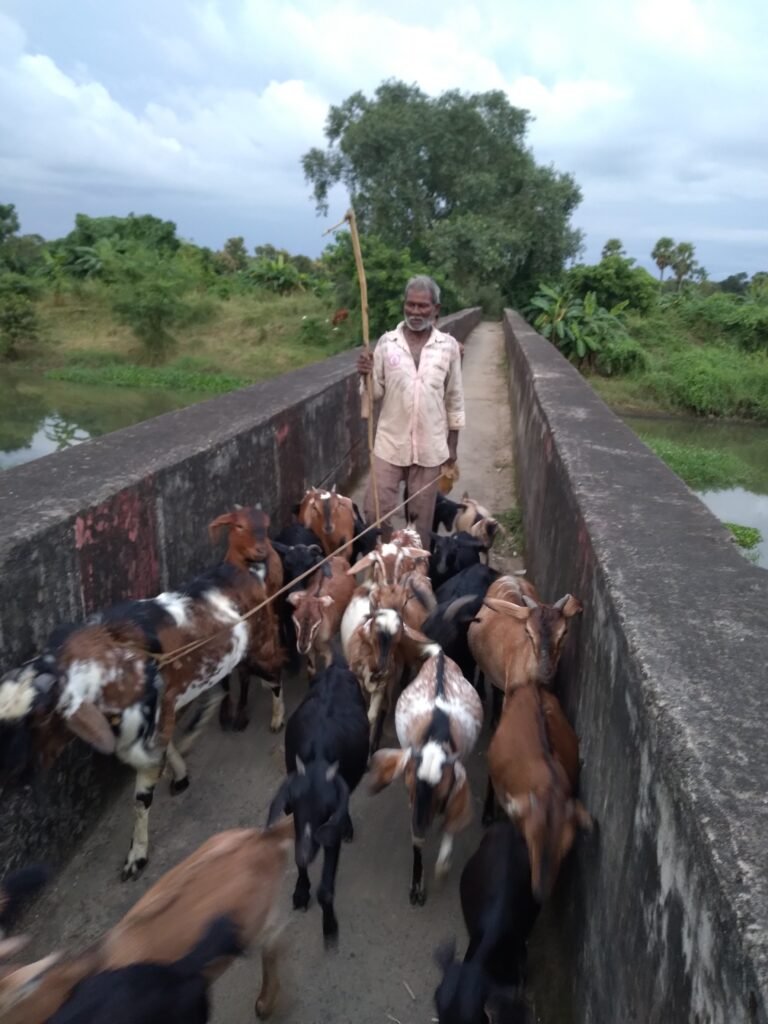
“No one may even give me ten rupees if I do not do any work for them. Then where can I get money in an emergency? If my daughter falls sick, I have to take her to a doctor and buy medicine. I have some money saved by selling the goats I can draw on in an emergency of this kind,” says the simple, suave Chittaranjan, straight from his heart.
Interaction With The Other People Came Across The Pathways Of DVC Khal
The villagers also said most of the fields had been purchased by rich people and nearby factory owners.“It is at their mercy, we continue farming. In return for the crops, we have to pay them out”, said one of them.
Tapas Das, an educated youth employed in a private firm in Kolkata, opined that “it is wrong for some villagers to sell off the land to promoters, industrialists, mostly through a middle man. The land is very fertile here. You do not need to invest much in this, but you get good crops with little effort. It gives them financial stability. The land was an asset for them. But they mindlessly sell it off; the money they earned by selling land is exhausted after some time”.
But opinions vary from person to person. When I asked Anil Ghosh, Prafulla Das, and others about the reason behind selling the land despite its fertility, they said terrible drainage causes the ground to flood, leading to the crops being damaged. “What to do then? Instead of suffering loss, it is better to sell it off. Rampant industry growth also impedes drainage, ” remarked Anil Ghosh.
Anil Ghosh and Prafulla Das said that when industry on Delhi road was coming up, the land was sold at Rupees 4 to 5 Lakhs per ‘Bigha. But now, with the industry booming, the price has shot up to Rs 15 to 16 Lakhs per ‘Bigha.’
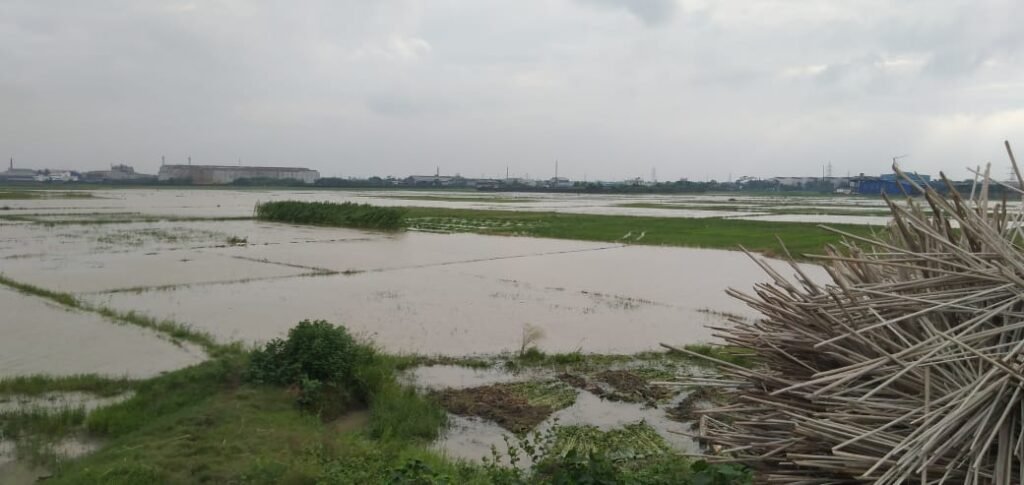
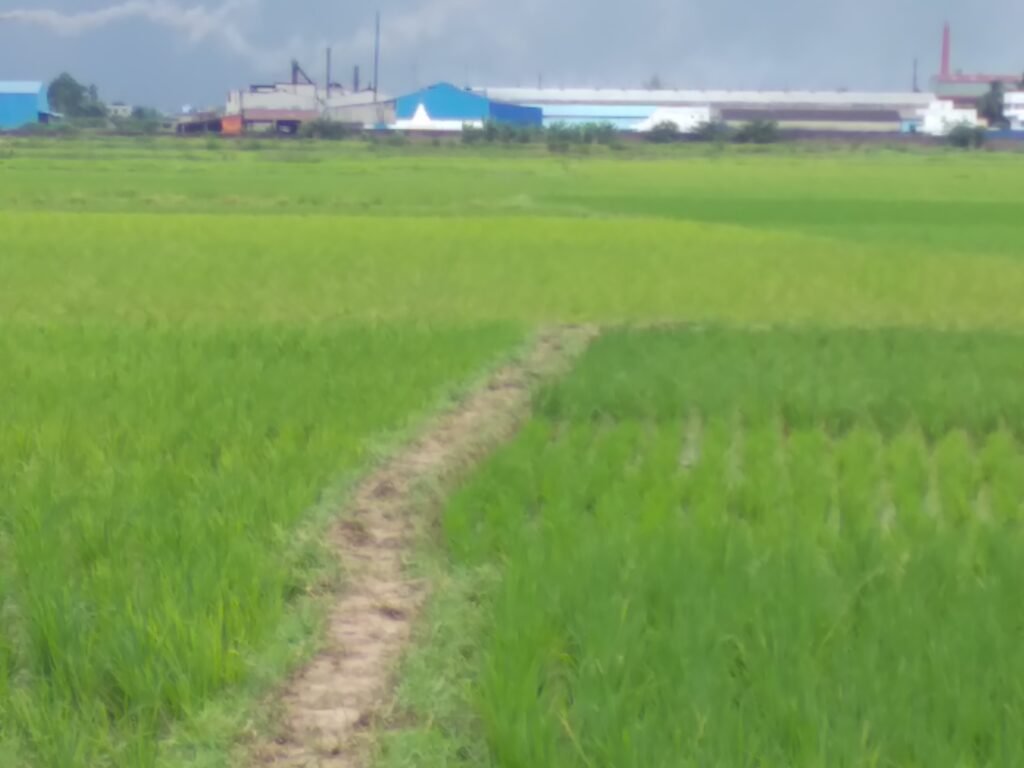
Visit Village : Gourangapur

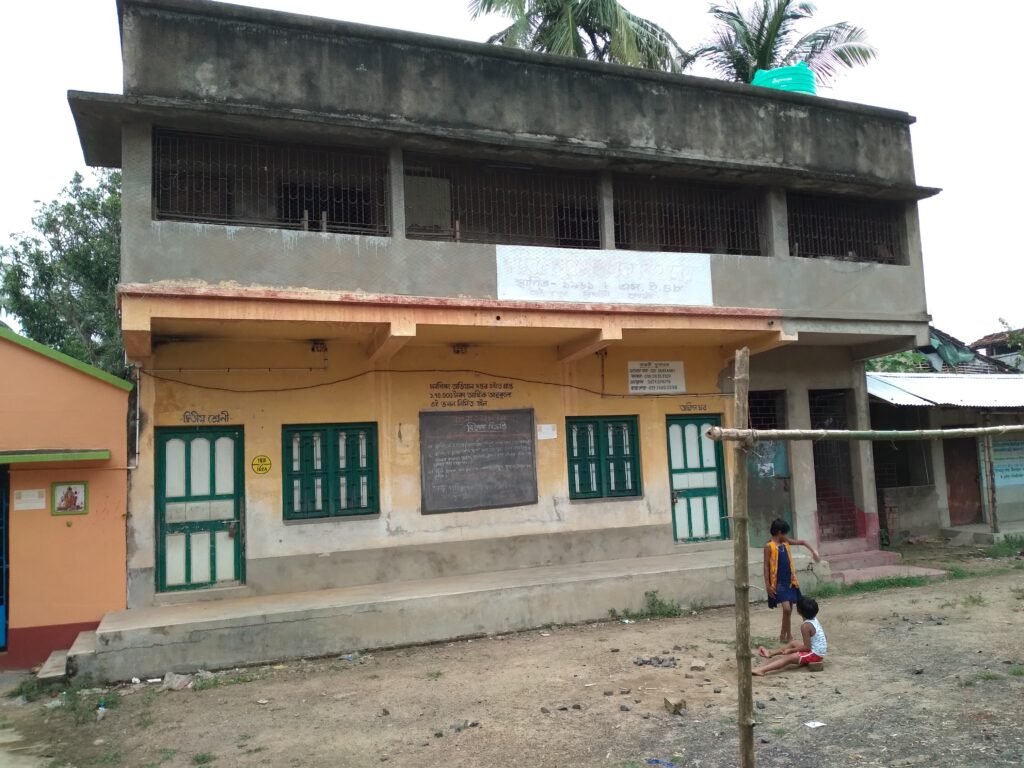
I also visited the village of Gourangopur, adjacent to DVC Khal, to get an idea of the village and its people. Shailendra Nath Ghosh, appearing with an authoritative face, said the village is today far better than what it was in those years during the 60s.
“There was a time when the village was in a miserable state. People did not have enough money to earn a living, did not have permanent shelter, and hardly were any brick houses in villages. Adding to our woes, in 1965 was, a drought resulted in famine in the region.
Ghosh said there were absolutely no crops in the field during the drought. So people were starving, lived on dry maize grain. In the face of such a crisis, ‘Brindavan Ghosh,’ a wealthy man from this village, and ‘Gopal Charan Ghosh’ ‘an Engineer with Zila Parishad’ helped us immensely.
“But today, almost all families’ children are getting an education, earning money, and most are self-reliant. There are brick houses all around the village. Maybe they are not rich, but they live through”. Said ‘Shailendra Nath Ghosh.’
Interestingly enough, the entire village population is descendants of Ghosh’s family. The village, therefore, is also called Ghosh ‘para’. (para is a Bengali word that means neighborhood)

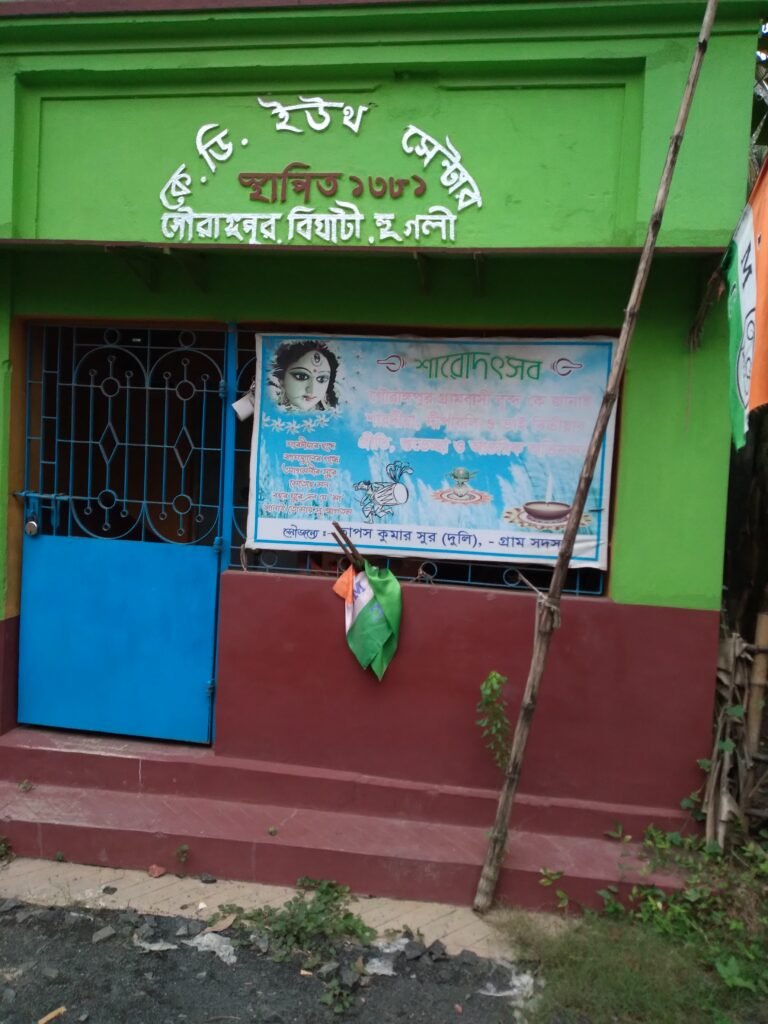
Conclusion:
l love to visit DVC Khal again and again. Nature calls me here, so also the people of the village here. I find them very simple and open-hearted. Try this place at least once to rejuvenate your mind and body.
But a word of caution too- ‘visit DVC Khal in daytime only and quit before sundown because crimes often happen on ‘DVC Khal’ pathways. But the adjacent villages are always safe.
DVC Khal: Description of Visit: Table of Content.
| Sl.No. | Particular | Features | Remarks |
| 1 | How to reach | By road: Driving along with national highway no.6 | Take turn to the lane adjoining the Bighati crossroads. Then go straight, take a right turn near the 1st bridge, get past the residential area of Gourangapur. A little ahead is DVC Khal |
| 2 | do. | By Train | Take any Local Bandel or Burdwan bound train, get down at Baidyabati station. Go to platform 3. A two to three-minute walk to reach DVC Khal |
| 3 | What is to be seen at DVC Khal | Nature beauty in Curve shaped Khal, Leafy trees, flowers, rice fields, Jute field at this moment, green vegetables from November onwards, birds of migratory nature, red soiled path on the side of khal, Sighting of Fishing by villagers and farmers working in the field, | Enjoy serene nature, evoking the beautiful feeling of village culture |
| 4 | Extraction of Jute & Transplantation method of Rice plantation | Steps for Jute processing: a)Immersion of Stem of Jute plant underwater for an around a week or till its decomposition b) Fibre extraction from decomposed Stem c) Drying of fiber for 48 hours before selling directly or through a middle man to nearby mills. In the mill, finish products like Bag, Gunny Bag, Rope, etc., are manufactured by processing the jute. d) The unused stalk or wood of leftover part after fiber extraction is called Pakati in local parlance. It is bundled collectively and used as fuel. Paddy Cultivation by Transplantation: a) Field is cultivated with rice seed (Dhan beej) just before monsoon with the help of a tractor. b) Soil is made wet either through rainwater, and if there is scanty rain, then water from DVC Khal is drawn in an emergency. c)Manured applied infield as the plant from the seed starts to grow d) Small plant of 3 inches comes up from seed are called beeja in local parlance e) Beeja or plant are pulled up by roots. It is cleaned by water, and soil that sticks on beeja is removed and washed f)Beeja along with its root re-sowed in adjacent land where finally paddy grows, same is harvested by October and after that further processed and send to rice mills. | Rice grown by transplantation is better in yield and quality. Farmers in the field are always enthusiastic about explaining the process of Jute and Paddy cultivation |
| 5 | Nearest Village to DVC Khal | Gourangapur: A village of around 2000 to 3000 inhabitants. The village is relatively better than 5 to 6 decades ago. The village has its school. Occupation: Mostly peasants; some are teachers while some work in nearby mills or the city or do business. | Villagers are simple and talk open-heartedly with strangers. |































